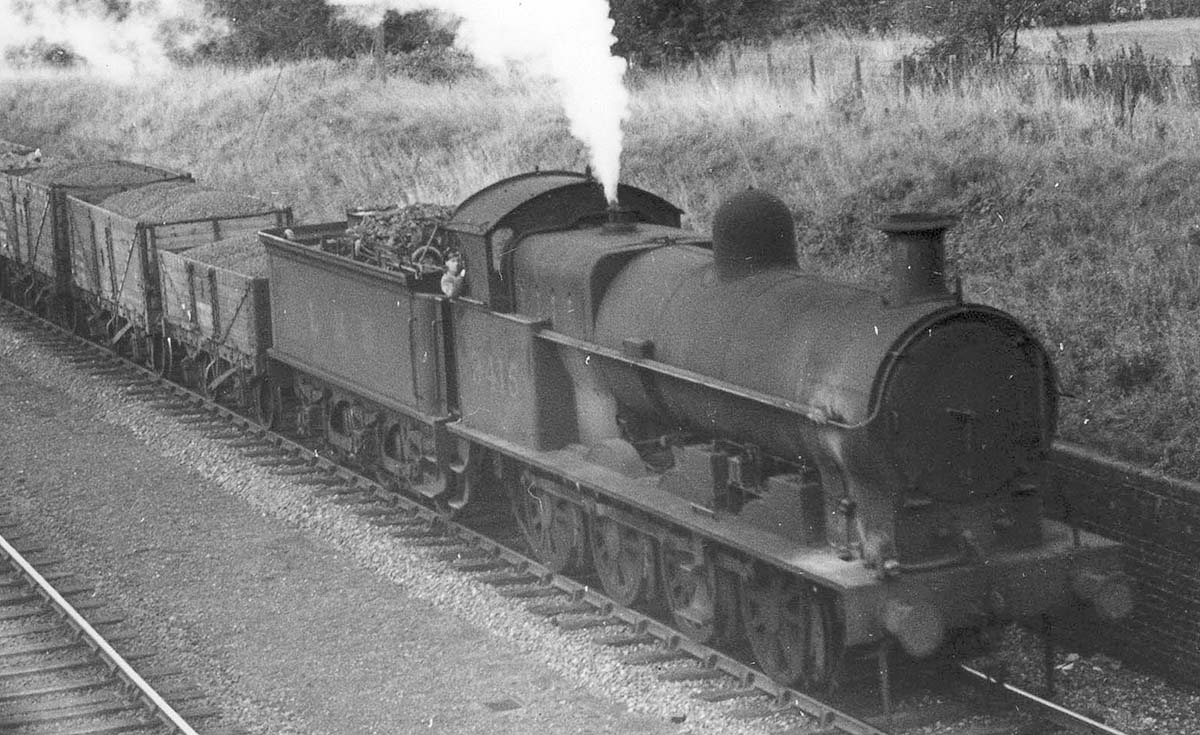|
|
 |
 |
|
London North Western
Railway:

Midland
Railway:

Stratford
Midland Junction Railway
|

|
LMS Route: Nuneaton to Leamington
Old Milverton Lineside Views: lnwr_oldmil1465a
 |
Close up of image 'lnwr_oldmil1465' showing ex-LNWR 7F 0-8-0
'G2' No 9415 in a very grimy and dirty condition with two types of coal in the
wagons behind the tender. It wasn't just in British Railways days that
locomotives, particularly goods engines, were not cleaned on a regular basis.
Whilst never cleaned as thoroughly as passenger locomotives goods engine were
prior to the First World War were kept in a much better condition than
afterwards. The railways were labour intensive in practically every area of
operational life and when labour was cheap, high standards of cleanliness could
be achieved without impacting on the profitability of the railway. When labour
became a scarce resource during the Second World War the emphasis changed from
preventative maintenance to only repairing parts when they broke. The cleaning
of locomotives fell very much in to this latter category. After the Second
World War the shortage of labour was due to the better pay and working
conditions found in the factories and this too led to the selective cleaning of
locomotives with passenger locomotives being prioritised. When it was announced
that steam was to be withdrawn from a given area, few locomotives from the
affected sheds were cleaned except by a few enthusiasts who cleaned locomotives
on the steam specials commissioned as a Farewell to Steam. Whilst the date on
the photograph states late 1930s, in my opinion the photograph was taken circa
1947-8.
 back back

|
|
|
